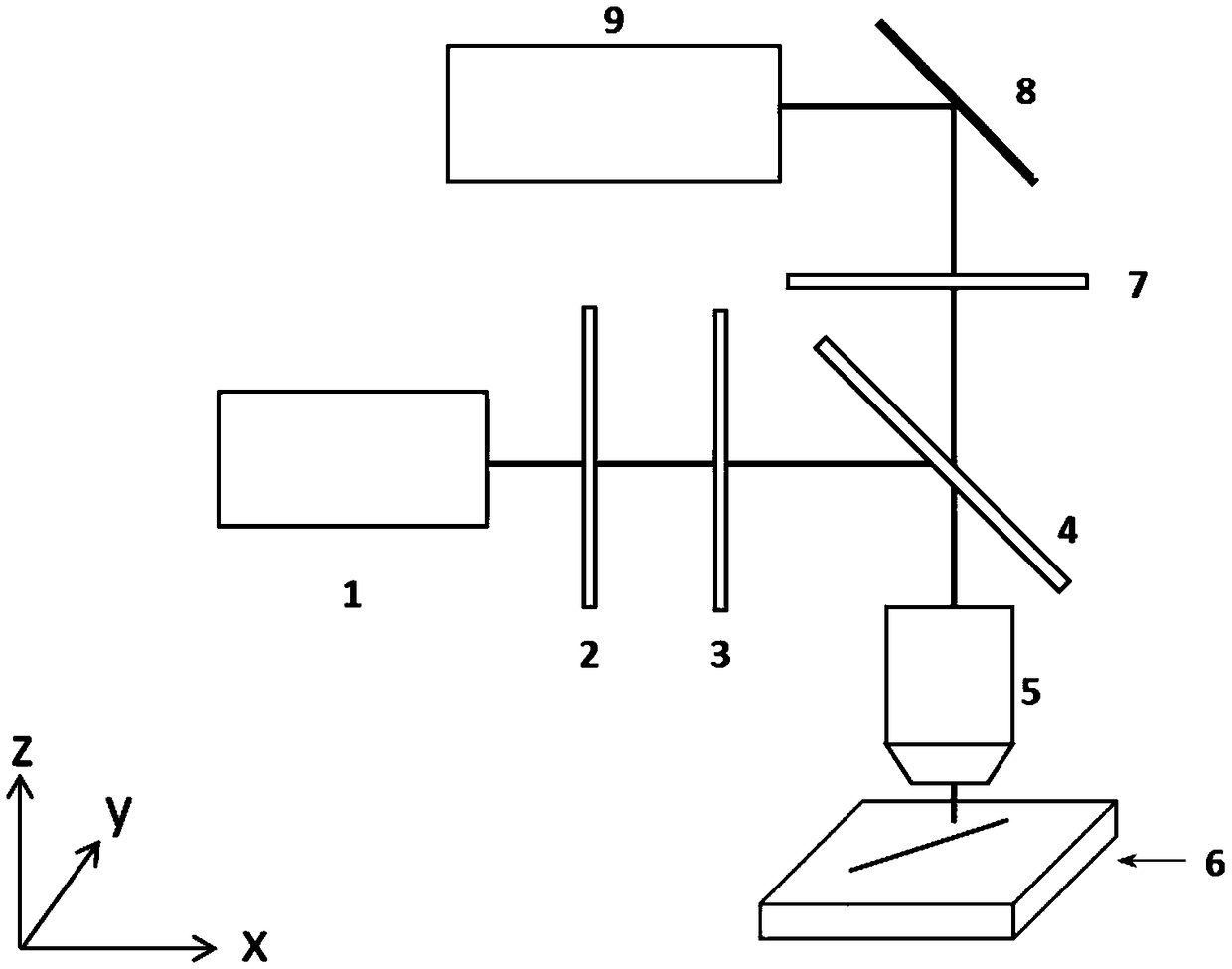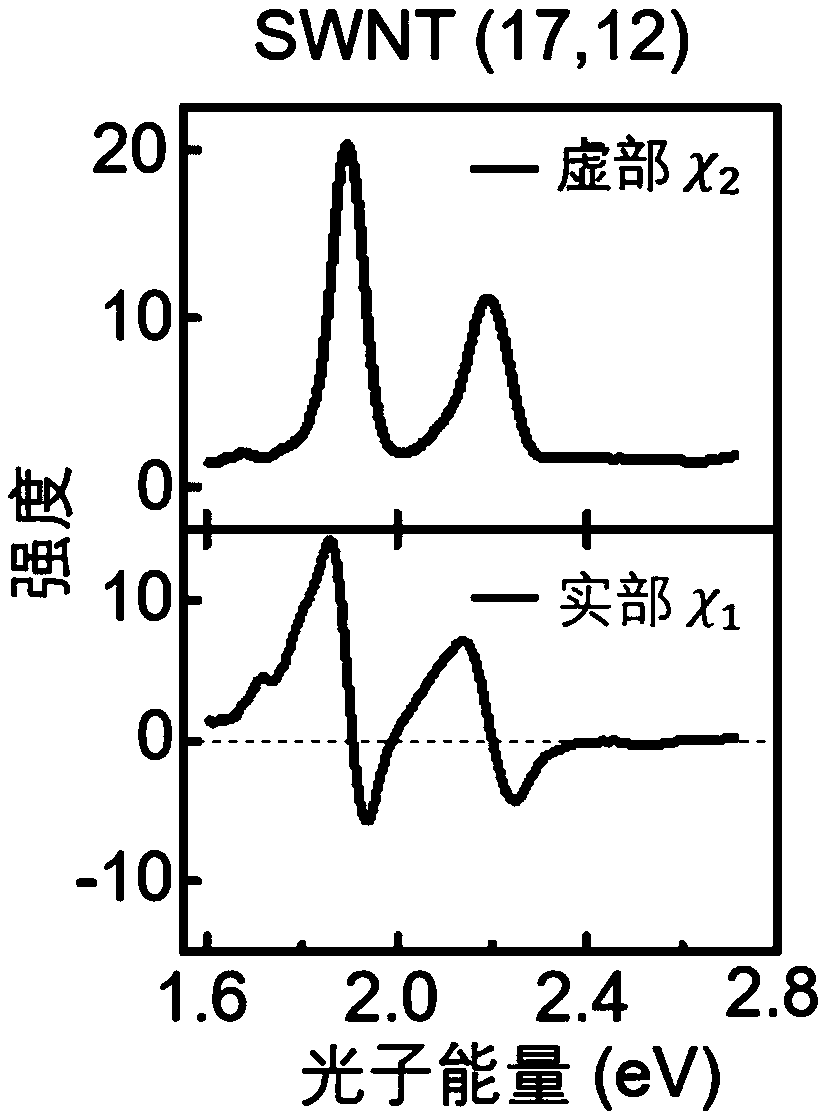Device and method for measuring repolarization rate of one-dimensional material
A polarizability and sample technology, which is applied in the fields of spectroscopy and optoelectronics, can solve the problems of inability to measure the complex polarizability of one-dimensional materials, and inability to accurately calculate the real part information of the complex polarizability. Simple operation, wide frequency effect
- Summary
- Abstract
- Description
- Claims
- Application Information
AI Technical Summary
Problems solved by technology
Method used
Image
Examples
Embodiment 1
[0034] Using the transmission method to measure the repolarization rate of a single carbon nanotube includes the following steps:
[0035] 1) if figure 1 As shown, the optical path includes a light source 1, a first polarizer 2, a quarter-wave plate 3, a first polarization-maintaining lens 4, a suspended one-dimensional material sample 5, a second polarization-maintaining lens 6, and a second polarizer 7 , and spectrometer 8 . Wherein, the light source 1 can be a supercontinuum white laser (wavelength range: 400-2000nm), and the suspended one-dimensional material sample to be tested is, for example, suspended carbon nanotubes.
[0036] Along the light emitting direction of the light source, the light source, the first polarizer, the 1 / 4 wave plate, the first polarization-maintaining lens, the suspended one-dimensional material sample, the second The polarization-maintaining lens, the second polarizer, and the spectrometer are arranged in sequence.
[0037]2) At the focus of...
Embodiment 2
[0046] Measuring the repolarization rate of a single carbon nanotube by reflection method includes the following steps:
[0047] 1) if figure 2 As shown, the optical path includes a light source 1, a first polarizer 2, a quarter-wave plate 3, a beam splitter 4, a polarization-maintaining lens 5, a one-dimensional material sample and its substrate 6, a second polarizer 7, and a mirror 8. A spectrometer 9, wherein the light source 1 can be a supercontinuum white laser, and the one-dimensional material sample to be tested is a carbon nanotube.
[0048] Along the light emitting direction of the light source, the light source, the first polarizer, the 1 / 4 wave plate, the beam splitter, the polarization-maintaining lens, the measured one-dimensional material sample and its substrate , the polarization-maintaining lens, the beam splitter, the second polarizer, the reflector, and the spectrometer are arranged in sequence.
[0049] 2) At the focal point of the polarization-maintaini...
PUM
 Login to View More
Login to View More Abstract
Description
Claims
Application Information
 Login to View More
Login to View More - R&D
- Intellectual Property
- Life Sciences
- Materials
- Tech Scout
- Unparalleled Data Quality
- Higher Quality Content
- 60% Fewer Hallucinations
Browse by: Latest US Patents, China's latest patents, Technical Efficacy Thesaurus, Application Domain, Technology Topic, Popular Technical Reports.
© 2025 PatSnap. All rights reserved.Legal|Privacy policy|Modern Slavery Act Transparency Statement|Sitemap|About US| Contact US: help@patsnap.com



